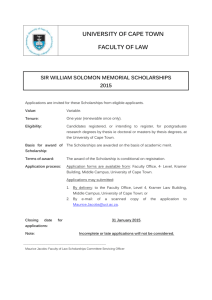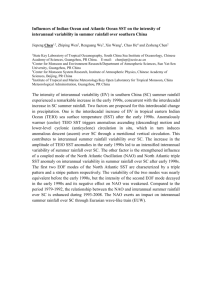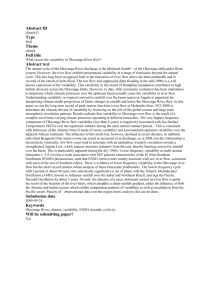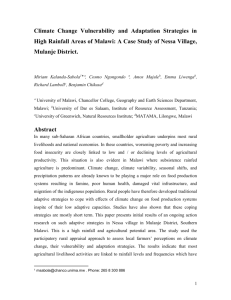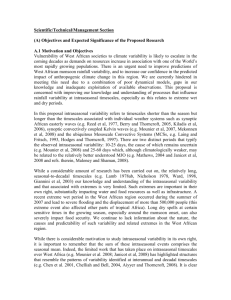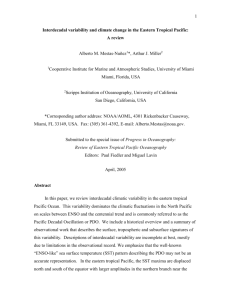Winter and summer Southern African rainfall variability: An
advertisement
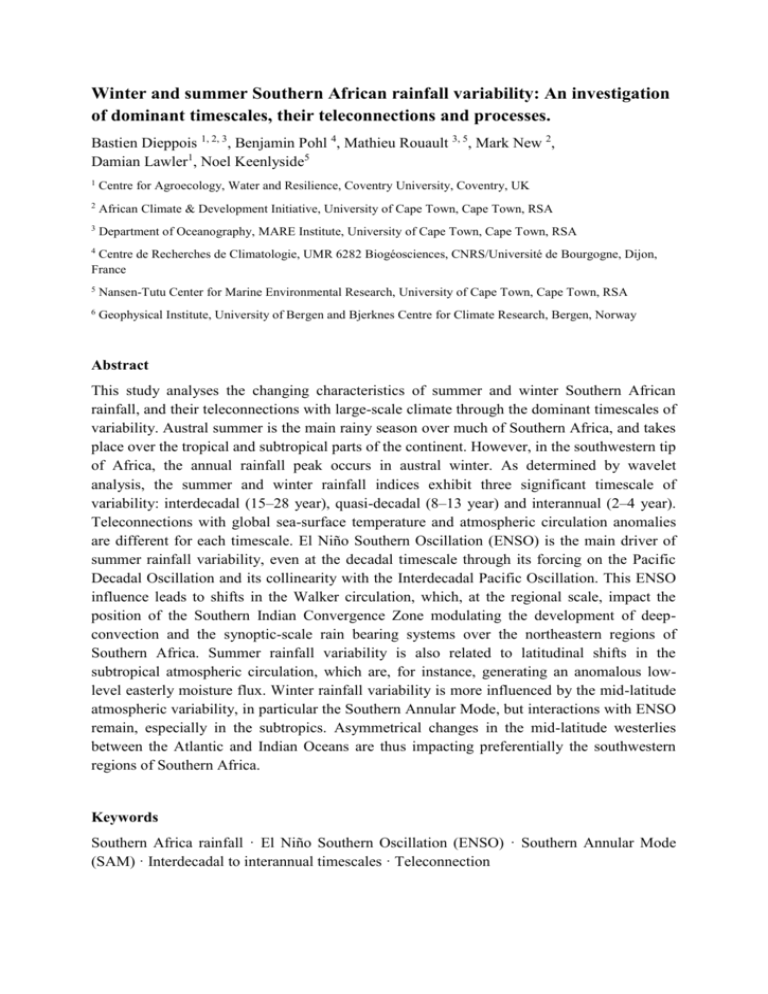
Winter and summer Southern African rainfall variability: An investigation of dominant timescales, their teleconnections and processes. Bastien Dieppois 1, 2, 3, Benjamin Pohl 4, Mathieu Rouault 3, 5, Mark New 2, Damian Lawler1, Noel Keenlyside5 1 Centre for Agroecology, Water and Resilience, Coventry University, Coventry, UK 2 African Climate & Development Initiative, University of Cape Town, Cape Town, RSA 3 Department of Oceanography, MARE Institute, University of Cape Town, Cape Town, RSA 4 Centre de Recherches de Climatologie, UMR 6282 Biogéosciences, CNRS/Université de Bourgogne, Dijon, France 5 Nansen-Tutu Center for Marine Environmental Research, University of Cape Town, Cape Town, RSA 6 Geophysical Institute, University of Bergen and Bjerknes Centre for Climate Research, Bergen, Norway Abstract This study analyses the changing characteristics of summer and winter Southern African rainfall, and their teleconnections with large-scale climate through the dominant timescales of variability. Austral summer is the main rainy season over much of Southern Africa, and takes place over the tropical and subtropical parts of the continent. However, in the southwestern tip of Africa, the annual rainfall peak occurs in austral winter. As determined by wavelet analysis, the summer and winter rainfall indices exhibit three significant timescale of variability: interdecadal (15–28 year), quasi-decadal (8–13 year) and interannual (2–4 year). Teleconnections with global sea-surface temperature and atmospheric circulation anomalies are different for each timescale. El Niño Southern Oscillation (ENSO) is the main driver of summer rainfall variability, even at the decadal timescale through its forcing on the Pacific Decadal Oscillation and its collinearity with the Interdecadal Pacific Oscillation. This ENSO influence leads to shifts in the Walker circulation, which, at the regional scale, impact the position of the Southern Indian Convergence Zone modulating the development of deepconvection and the synoptic-scale rain bearing systems over the northeastern regions of Southern Africa. Summer rainfall variability is also related to latitudinal shifts in the subtropical atmospheric circulation, which are, for instance, generating an anomalous lowlevel easterly moisture flux. Winter rainfall variability is more influenced by the mid-latitude atmospheric variability, in particular the Southern Annular Mode, but interactions with ENSO remain, especially in the subtropics. Asymmetrical changes in the mid-latitude westerlies between the Atlantic and Indian Oceans are thus impacting preferentially the southwestern regions of Southern Africa. Keywords Southern Africa rainfall · El Niño Southern Oscillation (ENSO) · Southern Annular Mode (SAM) · Interdecadal to interannual timescales · Teleconnection






